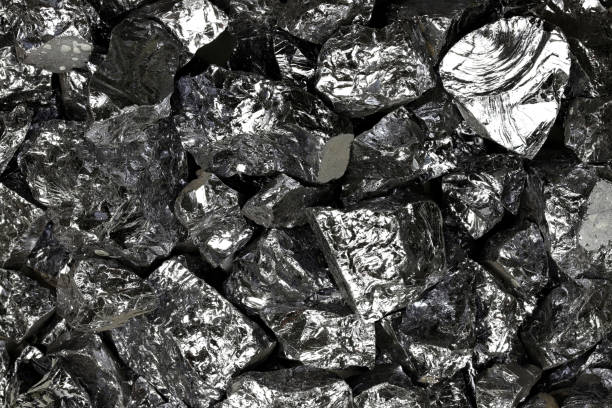Introduction to Silikon
In today’s fast-paced world, one material stands out as a silent hero shaping industries, innovation, and comfort — silikon. From medical equipment to electronics and home products, silikon plays a vital role in modern life. Its flexibility, durability, and resistance make it one of the most versatile materials in existence. But what exactly makes silikon so special? Let’s explore how this remarkable material is transforming the world around us.
What is Silikon?
Silikon is a synthetic polymer made from silicon, oxygen, carbon, and hydrogen. Unlike traditional plastics, silikon remains flexible and stable even in extreme temperatures. It doesn’t react easily with other substances, which is why it’s widely used in healthcare, construction, and electronic industries.
Silikon can take various forms — from soft gels and rubbery textures to firm and heat-resistant compounds. This adaptability allows manufacturers to use it for medical implants, phone cases, kitchenware, and even aerospace parts.
Read More: Power of insetprag
The Evolution of Silikon in Modern Industries
The Rise of Silikon in Technology
The digital age wouldn’t be possible without silikon. It’s a critical component in semiconductors, the tiny chips that power everything from smartphones to satellites. These chips rely on silikon’s ability to conduct and resist electricity precisely, ensuring the smooth operation of digital devices.
Silikon in the Medical Field
In healthcare, silikon has revolutionized medical technology. It’s hypoallergenic, biocompatible, and safe for human use. Surgeons use silikon for implants, prosthetics, catheters, and medical tubing. Its ability to resist bacteria growth and tolerate sterilization makes it a perfect choice for critical applications.
The Role of Silikon in Construction and Manufacturing
Builders and engineers trust silikon for sealing, insulation, and protection. It withstands moisture, UV light, and temperature fluctuations, making it ideal for windows, roofs, and industrial machinery. Unlike traditional sealants, silikon retains its elasticity for years, reducing maintenance costs.
Everyday Uses of Silikon You Might Not Notice

Silikon quietly enhances our daily lives. From non-stick baking molds to waterproof clothing and smartphone accessories, it’s present everywhere. Kitchen products made with silikon can handle both freezing and baking temperatures, ensuring safety and convenience. In personal care, silikon-based shampoos and lotions provide a smooth, silky texture.
Even in fashion, silikon is gaining popularity. Designers use it to make durable, flexible accessories that last longer and maintain their shine.
Why Silikon Is Environmentally Advantageous
Sustainability is crucial today, and silikon offers a greener alternative to many plastics. It’s long-lasting, non-toxic, and recyclable in specific facilities. Because it doesn’t degrade easily, products made from silikon reduce waste over time.
Unlike petroleum-based plastics, silikon production doesn’t rely heavily on fossil fuels. This makes it a more eco-friendly choice for companies focused on sustainability and responsible manufacturing.
Comparing Silikon with Other Materials
When compared to materials like rubber, plastic, or latex, silikon often outperforms them in durability and safety. It doesn’t melt, crack, or become brittle under pressure. Moreover, silikon’s resistance to heat and chemicals makes it suitable for industrial environments where traditional materials fail.
While the initial cost of silikon products may be higher, their lifespan and performance make them a cost-effective investment.
The Future of Silikon Innovation
The possibilities for silikon are expanding every year. Scientists are developing new silikon composites that conduct electricity, making flexible electronics possible. In the automotive industry, silikon-based materials are used for EV batteries, seals, and gaskets that endure extreme conditions.
As smart devices and wearable technologies grow, silikon will continue to be a key player. Its ability to combine flexibility, safety, and strength ensures its importance in the next generation of technological advances.
Silikon in Sustainable Energy Solutions
Renewable energy projects also rely on silikon. Solar panels, for instance, use silikon to encapsulate photovoltaic cells, protecting them from moisture and UV rays. Wind turbines use silikon-based lubricants and seals to handle harsh weather.
The material’s resilience directly contributes to the efficiency and longevity of green technologies, making silikon a valuable asset in the fight against climate change.
Challenges in Silikon Production
While silikon has countless benefits, its production process still faces challenges. Manufacturing requires precise conditions and energy-intensive methods. Researchers are exploring ways to minimize energy use and develop recycling programs that handle silikon waste effectively.
There’s also the need for greater awareness among consumers about silikon’s recyclability and environmental benefits, helping shift preferences from single-use plastics to long-term silikon solutions.
The Economic Importance of Silikon
The global demand for silikon continues to rise. It supports industries worth billions of dollars, from medical devices to electronics and construction. Its market growth reflects its versatility and indispensable role in modern manufacturing.
Investments in silikon innovation also create jobs and boost local economies, highlighting how one material can drive global progress and economic stability.
Conclusion
The story of silikon is one of transformation, innovation, and sustainability. From the circuits in our gadgets to the implants in our bodies, silikon touches nearly every part of our lives. It’s more than just a synthetic polymer — it’s a cornerstone of progress that combines science, safety, and sustainability.
As industries evolve, silikon’s importance continues to grow. Its unmatched properties — flexibility, heat resistance, and biocompatibility — ensure it will remain a key material for decades to come. From green energy projects to next-generation technology, silikon will help shape a cleaner, smarter, and more connected world.
The beauty of silikon lies in its ability to adapt — just like the world it serves. It stands as a symbol of innovation, a bridge between nature and technology, and a promise for a sustainable future. Whether in a medical implant or a space satellite, silikon represents the strength and creativity of human progress.
5 FAQs about Silikon
Q1: What is silikon made from?
Silikon is made from silicon, oxygen, carbon, and hydrogen, forming a versatile synthetic polymer.
Q2: Is silikon safe for food use?
Yes, food-grade silikon is non-toxic and safe for cooking, baking, and food storage applications.
Q3: Can silikon be recycled?
While not as easily recyclable as plastic, specialized facilities can recycle silikon into usable forms.
Q4: Why is silikon used in medical devices?
Silikon is biocompatible, flexible, and resistant to bacteria, making it ideal for medical implants and tubing.
Q5: How does silikon impact the environment?
Silikon’s long lifespan and non-toxic nature make it a sustainable alternative to many disposable plastics.



